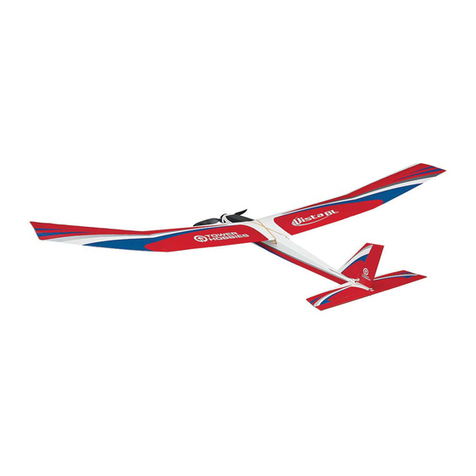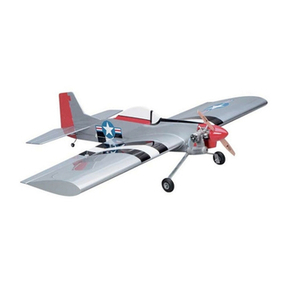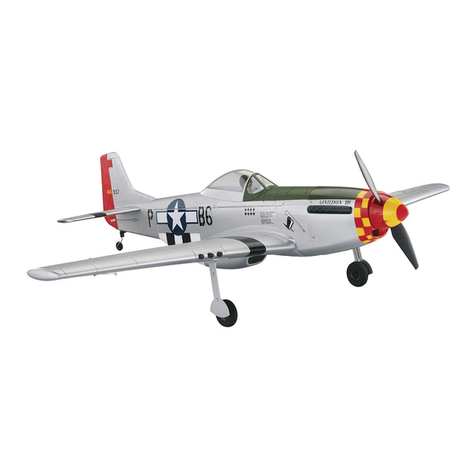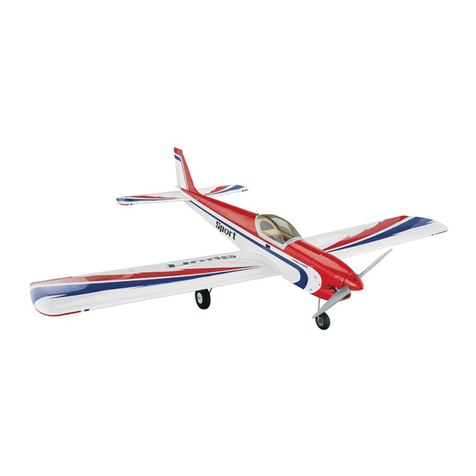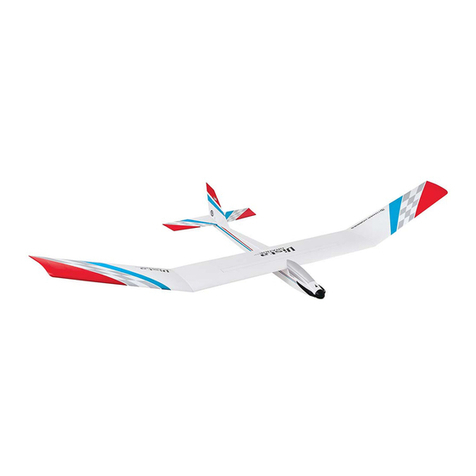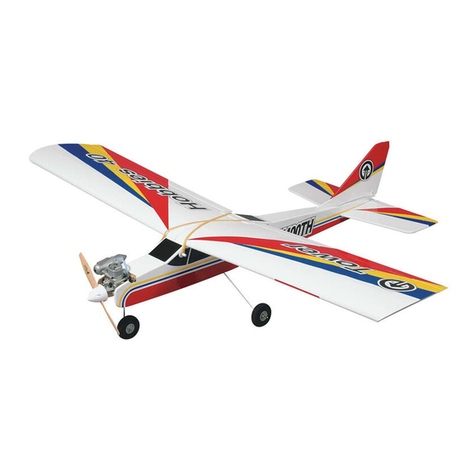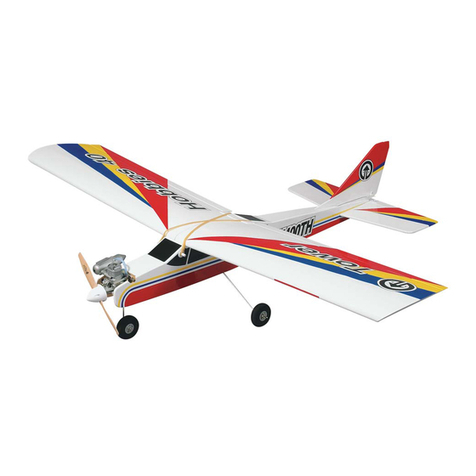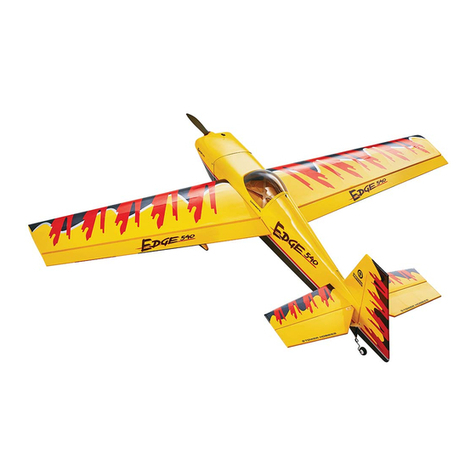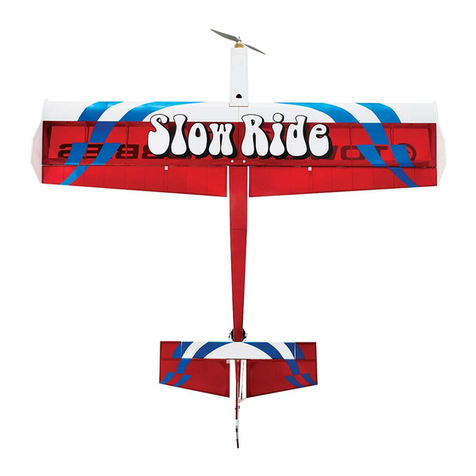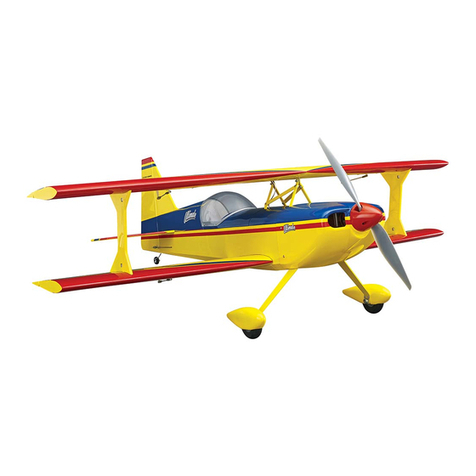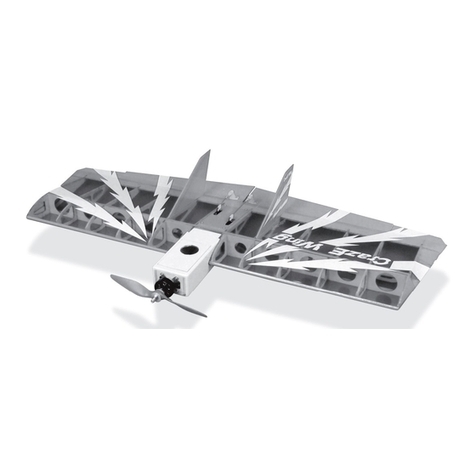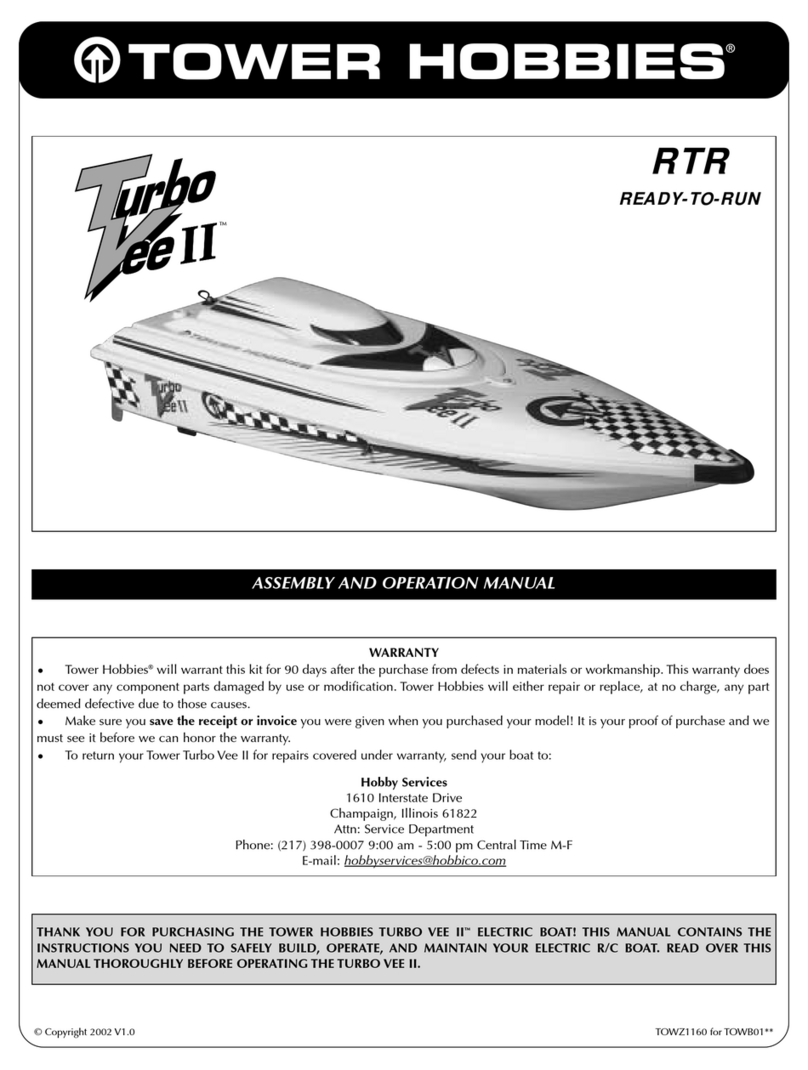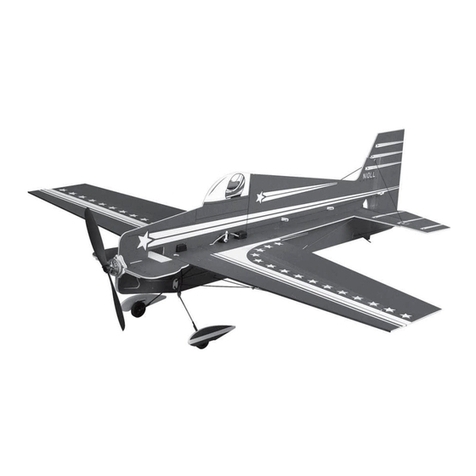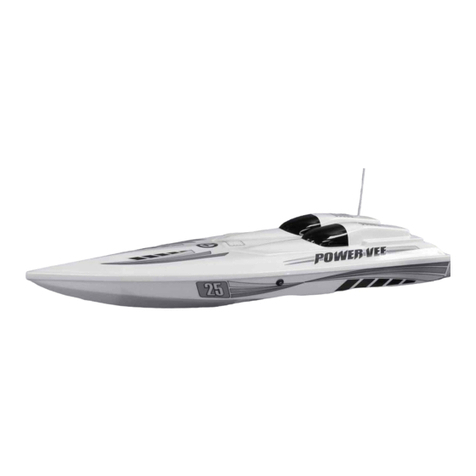
2
INTRODUCTION
TABLE OF CONTENTS
AMA . . . . . . . . . . . . . . . . . . . . . . . . . . . . . . . . . . . . . . . . . . . . 2
SAFETY PRECAUTIONS . . . . . . . . . . . . . . . . . . . . . . . . . . 2
REQUIRED ITEMS . . . . . . . . . . . . . . . . . . . . . . . . . . . . . . . . 3
Optional Tools and Supplies . . . . . . . . . . . . . . . . . . . . . . 3
Battery & Charger Recommendations. . . . . . . . . . . . . . . 3
ORDERING REPLACEMENT PARTS . . . . . . . . . . . . . . . 3
KIT INSPECTION . . . . . . . . . . . . . . . . . . . . . . . . . . . . . . . . 3
KIT CONTENTS . . . . . . . . . . . . . . . . . . . . . . . . . . . . . . . . . . 4
ASSEMBLE THE WING . . . . . . . . . . . . . . . . . . . . . . . . . . . 4
ASSEMBLE THE FUSELAGE . . . . . . . . . . . . . . . . . . . . . . . 5
RADIO SETUP . . . . . . . . . . . . . . . . . . . . . . . . . . . . . . . . . . . 6
INSTALL THE LANDING GEAR (Optional) . . . . . . . . 7
INSTALL THE PROPELLER AND SPINNER . . . . . . . . . 8
GET THE MODEL READY TO FLY . . . . . . . . . . . . . . . . . 8
Check the Controls & Control Direction . . . . . . . . . . . . . 8
Check the Control Throws . . . . . . . . . . . . . . . . . . . . . . . . 9
Balance the Model (C.G.) . . . . . . . . . . . . . . . . . . . . . . . . 9
APPLY THE DECALS. . . . . . . . . . . . . . . . . . . . . . . . . . . . . 10
PREFLIGHT . . . . . . . . . . . . . . . . . . . . . . . . . . . . . . . . . . . . . 10
Identify Your Model . . . . . . . . . . . . . . . . . . . . . . . . . . . . 10
Charge the Battery . . . . . . . . . . . . . . . . . . . . . . . . . . . . . 10
MOTOR SAFETY PRECAUTIONS . . . . . . . . . . . . . . . . 10
LITHIUM BATTERY HANDLING & USAGE. . . . . . . . 11
FLYING THE P-51 MUSTANG . . . . . . . . . . . . . . . . . . . 11
Find a Suitable Flying Site . . . . . . . . . . . . . . . . . . . . . . . 11
Perform a Range Check . . . . . . . . . . . . . . . . . . . . . . . . . 11
Monitor Your Flight Time . . . . . . . . . . . . . . . . . . . . . . . . 11
Take Off. . . . . . . . . . . . . . . . . . . . . . . . . . . . . . . . . . . . . . 11
ROG Take Off . . . . . . . . . . . . . . . . . . . . . . . . . . . . . . . . . 12
Flying. . . . . . . . . . . . . . . . . . . . . . . . . . . . . . . . . . . . . . . . 12
Landing . . . . . . . . . . . . . . . . . . . . . . . . . . . . . . . . . . . . . . 12
AFTER EACH FLIGHT . . . . . . . . . . . . . . . . . . . . . . . . . . . . 12
REPAIRING YOUR MODEL . . . . . . . . . . . . . . . . . . . . . . 12
AMA
We urge you to join the AMA (Academy of Model Aeronautics)
and a local R/C club. The AMA is the governing body of model
aviation and membership is required to fly at AMA clubs.
Though joining the AMA provides many benefits, one of the
primary reasons to join is liability protection. Coverage is not
limited to flying at contests or on the club field. It even applies
to flying at public demonstrations and air shows. Failure to
comply with the Safety Code (excerpts printed in the back of
the manual) may endanger insurance coverage. Additionally,
training programs and instructors are available at AMA club
sites to help you get started the right way. There are over 2,500
AMA chartered clubs across the country. Contact the AMA at
the address or toll-free phone number below:
Academy of Model Aeronautics
5151 East Memorial Drive
Muncie, IN 47302-9252
Ph. (800) 435-9262
Fx. (765) 741-0057
Or via the Internet at: http://www.modelaircraft.org
IMPORTANT: Two of the most important things you can do
to preserve the radio controlled aircraft hobby are to avoid fly-
ing near full-scale aircraft and avoid flying near or over groups
of people.
SAFETY PRECAUTIONS
PROTECT YOUR MODEL, YOURSELF
& OTHERS.....FOLLOW THESE
IMPORTANT SAFETY PRECAUTIONS
1. Your Mustang should not be considered a toy, but rather a
sophisticated, working model that functions very much like
a full-size airplane. Because of its performance capabilities,
this model, if not assembled and operated correctly, could
possibly cause injury to yourself or spectators and damage
to property.
2. You must assemble the model accordingtothe instructions.
Do not alter or modify the model, as doing so may result in
an unsafe or unflyable model. In a few cases the instructions
may differ slightly from the photos. In those instances the
written instructions should be considered as correct.
3. You must take time to build straight, true and strong.
4. You must use an R/C radio system that is in first-class
condition, and a correctly sized motor and components
throughout the building process.
5. You must correctly install all R/C and other components so
that the model operates correctly on the ground and in the air.
6. You must check the operation of the model before every
flight to insure that all equipment is operating and that the
model has remained structurally sound. Be sure to check
clevises or other connectors often and replace them if they
show any signs of wear or fatigue.
7. If you are not an experienced pilot or have not flown this
type of model before, we recommend that you get the
assistance of an experienced pilot in your R/C club for your
first flights. If you’re not a member of a club, your local
hobby shop has information about clubs in your area whose
membership includes experienced pilots.
8. While this kit has been flight tested to exceed normal use, if
the plane will be used for extremely high stress flying, such
as racing, or if an engine larger than one in the recommended
range is used, the modeler is responsible for taking steps to
reinforce the high stress points and/or substituting hardware
more suitable for the increased stress.
